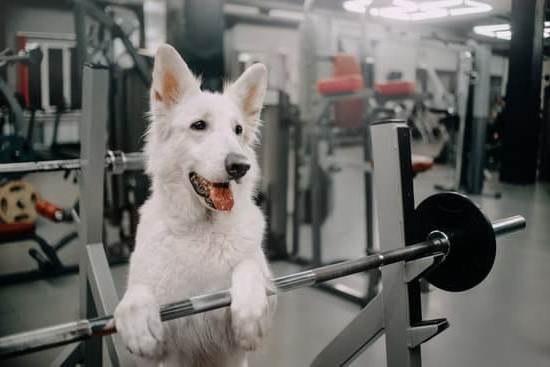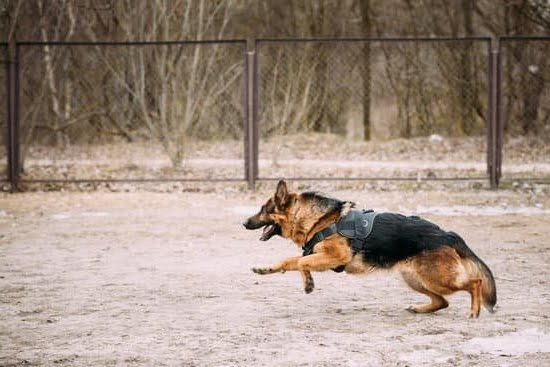Training your dog to walk on a leash is a crucial skill that enhances safety, helps in managing behavior, and strengthens the bond between you and your furry companion. Learning how to train the dog to walk on a leash effectively can make walks with your pet enjoyable and stress-free for both of you.
Leash training not only provides physical exercise but also mental stimulation for your dog, promoting their overall well-being. It teaches them boundaries and improves their obedience, leading to better behavior in various environments. By mastering leash walking, you can ensure your pet’s safety during outings and prevent any potential accidents or mishaps.
In this article, we will delve into the fundamentals of leash training, including selecting the right equipment, preparing your dog for training, troubleshooting common issues that may arise during walks, utilizing positive reinforcement techniques, and advancing to more complex training methods. By following our step-by-step guide and incorporating these strategies into your routine, you can set your dog up for success in walking on a leash confidently and harmoniously.
The Fundamentals of Leash Training
Understanding the Importance of Choosing the Right Leash and Collar
When it comes to leash training your dog, selecting the appropriate leash and collar is crucial for both your pet’s safety and successful training. The leash should be sturdy and comfortable to hold, with a length that allows for freedom of movement but keeps your dog close enough for control.
A standard six-foot leash is ideal for most training sessions. For collars, options range from flat buckle collars to martingale or slip collars, depending on your dog’s size, behavior, and comfort level.
Factors to Consider When Choosing a Leash and Collar
Before starting leash training, consider your dog’s breed, size, age, and behavior when selecting the right leash and collar. For example, a small breed may do well with a flat buckle collar while a strong puller might benefit from a no-pull harness.
Reflect on whether your dog has any sensory sensitivities or neck issues that may require a specific type of collar. It’s essential to choose equipment that not only fits comfortably but also provides you with adequate control during walks.
Tips for Successfully Introducing the Equipment
To acclimate your dog to the chosen leash and collar, start by letting them explore and sniff the items before putting them on. Use positive reinforcement such as treats or praise to create positive associations with wearing the equipment.
Gradually increase the time they wear the collar indoors before moving on to attaching the leash for short practice walks in familiar surroundings. Remember that patience and consistency are key as you introduce these tools to help set a strong foundation for successful leash training sessions.
By carefully considering your dog’s needs and preferences when choosing a leash and collar, you’ll be better equipped to begin effective training sessions that promote safe walking habits while strengthening your bond with your furry companion. Investing time in selecting the right equipment tailored to your pet’s individual requirements can make all the difference in how successfully you train them to walk on a leash with confidence.
Setting the Stage
Before diving into the actual training process, it is crucial to set the stage and prepare your dog for leash training. This involves ensuring that your furry friend is physically and mentally ready to begin learning how to walk on a leash effectively. Here are some important steps to take before starting the training process:
- Ensure your dog is comfortable with wearing a collar or harness: Before attaching a leash, make sure your dog is accustomed to wearing a collar or harness. This will help prevent any discomfort or resistance when you start leash training.
- Practice basic obedience commands: It’s essential for your dog to understand and respond to basic commands like “sit,” “stay,” and “come” before beginning leash training. These commands will come in handy during the training process.
- Get your dog familiar with the leash: Introduce the leash to your dog gradually by allowing them to sniff it, become accustomed to its presence, and associate it with positive experiences such as treats or playtime.
By taking these steps to prepare your dog for leash training, you can ensure a smoother and more successful training experience. Remember that patience, consistency, and positive reinforcement are key elements in teaching your dog how to walk on a leash confidently.
Step-by-Step Guide to Teaching Your Dog to Walk on a Leash
Teaching your dog to walk on a leash is an essential skill that will not only make your walks more enjoyable but also keep your furry friend safe. To start the training process, begin in a quiet and familiar environment without distractions. Attach your dog’s leash and collar, making sure they fit properly and comfortably. It’s crucial to choose the right equipment for your dog’s size and breed to ensure a positive leash training experience.
One of the key steps in teaching your dog to walk on a leash is getting them comfortable with wearing it. Start by letting them wear the collar and leash around the house for short periods, offering treats and praise to create positive associations.
Once your dog is relaxed with the gear, you can start practicing inside before moving to outdoor environments. Remember to always use a lightweight and sturdy leash that gives you control while being gentle on your dog’s neck.
When starting the actual walking training, use positive reinforcement techniques such as treats, praise, and rewards to encourage good behavior. Begin with short walks, gradually increasing the duration as your dog becomes more comfortable.
If your dog starts pulling on the leash, stop walking and wait for them to calm down before resuming. Consistency is key in training, so make sure to practice regularly and be patient as you guide your furry companion in mastering the art of walking on a leash.
| Leash Training Tip | Details |
|---|---|
| Start Slowly | Begin indoors or in a quiet area before moving to busier environments |
| Use Positive Reinforcement | Reward good behavior with treats, praise, or toys during training sessions |
| Be Patient | Remember that learning takes time; stay calm and consistent throughout the process |
Troubleshooting Common Leash Training Issues
Leash training your dog can sometimes come with challenges, but addressing common issues can help make the process smoother. Here are some troubleshooting tips to overcome some of the most common leash training problems:
- Dogs pulling on the leash: One of the most common issues dog owners face is their furry friend pulling on the leash during walks. To address this behavior, start by teaching your dog a “heel” command and reward them for walking calmly beside you. You can also try using a front-clip harness to discourage pulling or stop walking every time your dog starts tugging on the leash until they calm down.
- Leash aggression towards other dogs: If your dog displays aggression towards other dogs while on a leash, it’s essential to address this behavior promptly. Start by creating positive associations with other dogs by rewarding calm behavior when in their presence. Gradually decrease the distance between your dog and others while providing treats for staying relaxed, gradually desensitizing them to triggers that cause aggression.
- Fear or anxiety during walks: Some dogs may exhibit fear or anxiety while on a leash due to past negative experiences or unfamiliar surroundings. To help your pup overcome these emotions, start by desensitizing them to their triggers slowly. Introduce them to the environment they find challenging in small increments, rewarding calm behavior and providing reassurance along the way.
By addressing these common leash training issues using positive reinforcement techniques and consistency, you can help your dog develop good walking habits and strengthen your bond through enjoyable walks together. Remember that patience and persistence are key when training your furry companion, as each dog may require different approaches to overcome behavioral challenges while learning how to walk on a leash effectively.
Incorporating Positive Reinforcement Techniques Into Leash Training
Positive reinforcement is a crucial aspect of leash training your dog. By using positive reinforcement techniques, you can encourage good behavior and make the training process enjoyable for both you and your furry companion. Here are some effective methods to incorporate positive reinforcement into your leash training routine.
Using Treats
One of the most common ways to reinforce good behavior during leash training is by using treats. Whenever your dog walks nicely on the leash without pulling or tugging, reward them with a small treat. This will help them associate walking calmly on the leash with receiving a tasty reward, making them more likely to repeat the behavior in the future.
Verbal Praise
In addition to treats, verbal praise is another powerful form of positive reinforcement. When your dog walks nicely on the leash, be sure to shower them with praise and encouraging words. Dogs respond well to positive feedback from their owners, so be generous with your praise whenever they exhibit good leash walking behavior.
Clicker Training
Another effective way to incorporate positive reinforcement into leash training is through clicker training. By using a clicker to mark desired behaviors, such as walking without pulling on the leash, you can communicate clearly with your dog about what you expect from them. Pairing the clicker sound with treats can help reinforce good behavior and improve your dog’s leash-walking skills over time.
By utilizing these positive reinforcement techniques in your leash training sessions, you can strengthen the bond between you and your dog while teaching them how to walk nicely on a leash. Remember to be patient and consistent in your training efforts, as every dog learns at their own pace. With time and practice, you’ll soon see improvements in your dog’s leash walking behavior.
Advanced Leash Training Techniques for Improved Walking Behavior
When it comes to advanced leash training techniques, there are several methods that can help improve your dog’s walking behavior. One effective technique is teaching your dog to walk next to you in a controlled heel position. To do this, start by teaching your dog basic obedience commands such as “sit” and “stay”.
Once they have mastered these commands, introduce the heel command while walking with them on a leash. Use positive reinforcement such as treats and praise when they walk correctly by your side.
Another advanced technique is desensitization training. This involves exposing your dog to various distractions while on a leash and teaching them to remain focused on you. Start in a quiet environment and gradually introduce distractions like other dogs, people, or noises. Reward your dog for keeping their attention on you despite the distractions. This will help reinforce good behavior and improve their walking behavior overall.
One important aspect of advanced leash training is consistency. Make sure to practice these techniques regularly and be patient with your dog as they learn. Remember that every dog is different, so it’s essential to tailor your training approach to suit your pet’s individual needs and temperament. By incorporating these advanced leash training techniques into your routine, you can help improve your dog’s walking behavior and strengthen the bond between you and your furry friend.
| Advanced Leash Training Techniques | Benefits |
|---|---|
| Controlled heel position training | Improves walking behavior |
| Desensitization training | Teaches focus despite distractions |
| Consistency in practice | Enhances learning process |
Ensuring Long-Term Success
Once your dog has mastered the basics of walking on a leash, it is crucial to maintain good leash walking habits to ensure long-term success. Consistency is key when it comes to reinforcing positive behaviors in your furry companion. One important aspect of maintaining good leash walking habits is to continue practicing regular walks with your dog. Aim for daily walks that provide mental stimulation and physical exercise for your pet.
Another vital factor in maintaining good leash walking habits is to always be aware of your surroundings during walks. Keep an eye out for potential distractions, sudden noises, or other animals that may cause your dog to pull on the leash. By being attentive and proactive, you can prevent any negative behaviors from resurfacing during walks.
Moreover, it is essential to remain patient and understanding throughout the process of maintaining good leash walking habits. Remember that consistency and positive reinforcement are key elements in shaping your dog’s behavior. If any challenges arise while walking on a leash, address them calmly and use techniques that have been successful in the past. By staying consistent and patient, you will be able to reinforce positive leash walking habits in your dog over time.
Conclusion
In conclusion, leash training is a crucial aspect of teaching your dog proper behavior and ensuring safety during walks. By following the steps outlined in this guide, you can set a solid foundation for a positive walking experience with your furry companion. Remember, patience and consistency are key when it comes to training your dog to walk on a leash.
As you progress through the training process, take the time to celebrate your dog’s achievements. Whether it’s taking their first successful walk without pulling or mastering a new command, acknowledging and rewarding their efforts will strengthen the bond between you and your canine friend. Positive reinforcement plays a significant role in shaping your dog’s behavior, so be sure to praise and treat them for their good behavior during leash training.
Ultimately, the goal of leash training is not just to have a well-behaved walking partner, but also to enhance the relationship you share with your pet. The time spent together during walks is not only beneficial for physical exercise but also provides mental stimulation and strengthens the bond between you and your dog.
So continue to practice patience, consistency, and positive reinforcement techniques as you train your dog to walk on a leash, and enjoy the journey of growth and bonding with your loyal companion.

Welcome to the blog! I am a professional dog trainer and have been working with dogs for many years. In this blog, I will be discussing various topics related to dog training, including tips, tricks, and advice. I hope you find this information helpful and informative. Thanks for reading!





